Understanding Third Party Logistics: What is a 3PL?
Learn what a 3PL is, how they work, benefits of partnering with a 3PL, and how to choose one for your business. Essential reading for supply chain managers and small business owners alike.
Introduction to third-party logistics (3PL)
Retailers are looking to third-party logistics (3PL) providers to ease the strain of increased ecommerce demand and customer expectations.
As more consumers expect deliveries within 1–2 days, a quicker turnaround is essential. Where and how the items are picked and packed, how and when they are collected from the distribution centre and delivered to the final customer, as well as how returns are handled, all matter. Every step needs to be cohesive and reliable, and this is where 3PL providers can help.
Our comprehensive guide covers everything you need to know about 3PLs, including what 3PLs do, how they work, the benefits of using a 3PL, and how to choose the right one for your business. Whether you're a small business owner or a supply chain manager, this guide will provide you with the knowledge and tools you need to make informed decisions about your logistics and supply chain management.
Jump to:
- What is a third party logistics (3PL) provider?
- How does third party logistics work?
- What is a 3PL management system?
- The benefits of partnering with a third-party logistics company
- How do 3PLs help retailers to grow?
- What is fourth party logistics (4PL)?
- How to choose a 3PL provider
- Frequently asked questions
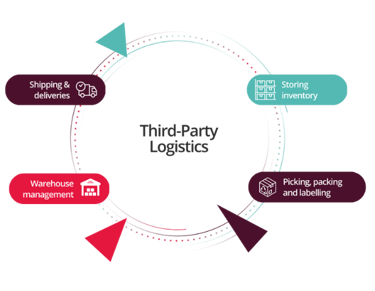
What is a third party logistics (3PL) provider?
What is a 3PL?
3PL or third-party logistics is an outsourced service provided by businesses such as warehouses or logistics companies, to complete some, or all of an ecommerce retailer's fulfillment operations. Doing this eliminates the strain for online retailers, as a 3PL partner will take care of tedious processes such as inventory management, warehouse management and fulfillment.
3PLs are often cost-effective and help online retailers to save time, allowing them to focus on other areas of their business.
3PLs can also be called, or known as:
- Fulfillment companies
- Fulfillment centres
- Fulfillment houses
- Fulfillment warehouses
- Distribution centres
What services does a 3PL provide?
3PLs provide outsourced services for a variety of operations to support supply chain management, including:
- Inventory management
- Warehouse management
- Order management and fulfillment
- Picking, packing and labelling
- Shipping and transportation
- Express shipping
- Order tracking
- Quality control
- Returns management
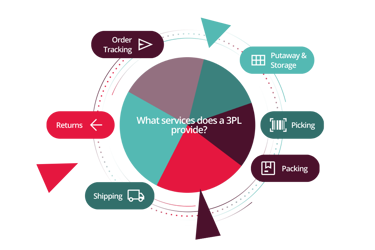
How does third party logistics work?
Online retailers rely on their 3PL partner to take control of operational logistics. Depending on the type of services you choose, the typical 3PL process will include:
Receiving orders:
3PL providers will have robust systems in place for receiving orders from their clients. This could be through an online portal, an electronic data interchange (EDI) system, or by using a 3PL management system.
Storing inventory:
A warehouse or storage facility will be used to keep store inventory. When an order is placed, the 3PL provider will locate the required items in their warehouse and prepare them for shipment.
Picking and packing:
Once the required items have been located, the 3PL provider will pick the items from the warehouse and pack them in a suitable container for shipping. Some providers may offer specialised packaging services.
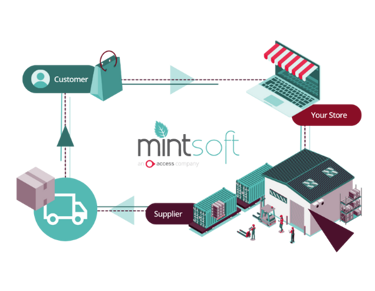
Shipping
The 3PL provider will then arrange for the items to be shipped to the customer, either through their own transportation network or by using a third party carrier.
Tracking and tracing:
To help you keep track of orders, 3PLs will have systems in place so that the provider, the client and the customer can see the status of the order at any given time.
Customer service:
Some providers may offer customer service support, which includes answering questions about orders and dealing with any issues that may arise, as well as seamlessly handling returns.

What is a 3PL management system?
3PL management software, otherwise known as a 3PL warehouse management system, allows 3PLs to gain a complete overview of their warehouse to effectively manage inventory and courier relationships from one centralised platform.
In more granular terms, 3PL software enables companies to automate and streamline their logistics processes, improve communication and collaboration with 3PL partners, and gain greater visibility and control over their supply chain. All of these benefits help 3PLs provide a better service for their ecommerce or retail clients, leading to business growth.
The benefits of partnering with a 3PL
Industry knowledge and expertise
With their breadth of experience dealing with supply chain logistics, 3PLs often have a wealth of industry knowledge in logistics and supply chain management. By having a deep understanding of potential issues and tried-and-tested ways of working, businesses that don't have in-house expertise can benefit significantly.
Cost efficiency
By outsourcing fulfillment and logistics operations to a 3PL provider, companies can often reduce their costs compared to managing logistics in-house. As 3PL providers have economies of scale, they can often negotiate lower rates with carriers and other service providers, which retailers can benefit from.
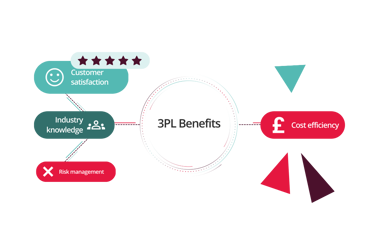
Flexibility
3PLs can quickly ramp up or down their services to meet changing demand, which can be especially useful for businesses with seasonal or irregular shipping needs.
Risk management
Third party logistics providers can help their clients to mitigate a number of risks across the supply chain. This includes:
- Diversified transportation with multiple carriers to help with the risk of relying on a single mode of transportation
- Robust contingency plans to help companies prepare for disruptions, such as strikes, to minimise the impact on business operations.
- Customs and compliance management to assist with customs clearance and reduce the risk of delays or penalties
- Insurance coverage to protect against the risk of loss or damage to goods
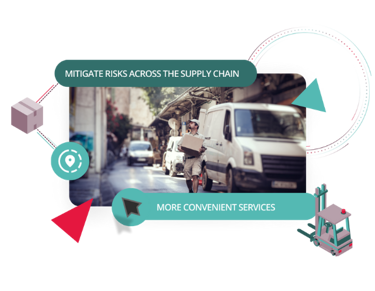
How do 3PLs help retailers to grow?
In a world where online shoppers choose convenience over brand loyalty, where and how orders are picked and packaged, delivery costs and timings, and ease of returns all matter. In fact, according to Retail Insight Network, 78% of consumers say they value convenience more today than they did before the pandemic.
Nowadays, many 3PL businesses have evolved their offerings by transitioning into tech first entities. Choosing a 3PL which has invested in technology to provide automated processes can have many benefits for online retailers, including enhanced customer experience.
As a result of an increase in orders since the start of the pandemic, Rosi Chapman, founder and owner of Transformulas®, a skin care and beauty brand, recently invested in a tech-enabled third-party logistics service. She commented:
“As people have had more time to focus on themselves during the pandemic, we enhanced our focus on our customer experience. We worked hard to ensure that products delivered quickly, and were beautifully presented, whilst also ensuring the highest level of service was provided to our customers.
To support this shift in our strategy, we invested in software which allowed direct automation links from our website to our stock and accounting systems, as well as to our 3PL warehouse team. By investing in technology, digitising our supply chain process and working closely with our 3PL partner, it was a lot easier to manage demands as our online orders grew. Without this software and the support of our 3PL partner, online growth would have been difficult to manage.”
What is fourth party logistics?
Fourth party logistic (4PL) providers are slightly different to the offerings of a 3PL. Rather than helping with just storage, picking, packaging and postage/delivery, a 4PL partner is used to outsource entire logistics operations. This can include support in other areas such as inventory management and planning, business planning, project management and inbound, outbound and reverse logistics management.
What is the difference between 3PL and 4PL?
The main difference between a 3PL and 4PL logistics is the level of involvement they offer. 3PL partners are better suited to small-medium sized businesses, whilst medium-large sized businesses will benefit more from partnering with a 4PL. This is because 4PLs manage and control all activities within the supply chain network, whilst 3PLs focus more specifically on logistics operations.
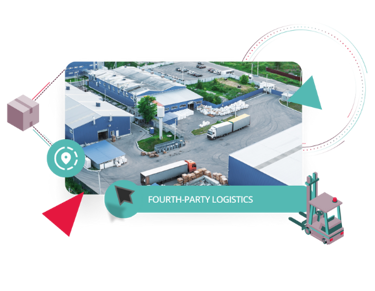
How to choose a 3PL provider
It’s important to remember that every ecommerce business is unique, and therefore so are the logistical needs of each. While some online retailers might only need support with fulfillment, others may need support across the whole process. With that in mind, it’s important to do research into what services a particular 3PL offers before committing to them.
The steps to partnering with a 3PL provider include:
- Identifying the logistics needs of the company: This involves analysing the company's current logistics system and identifying areas where third party logistics services could be beneficial.Consider the type of products, the frequency of shipments, the shipping destinations, and any special handling or storage requirements.
- Researching and selecting a provider: This involves researching different 3PL providers, comparing their services and pricing, and selecting a provider that best fits the company's needs. It’s important to find out whether their services are scalable to make sure the 3PL can exist as a long-term partner, rather than a short-term quick fix.
- Request proposals: Once a list of potential 3PLs has been created, the next step is to get in contact with each one and request proposals that outline their services and costs. Compare the proposals to determine which provider offers the best value for your company.
- Negotiating the terms of the contract: This involves discussing the specific logistics services that will be provided, the pricing and payment terms, and any other details of the contract.
- Implementing the 3PL services: Once the contract is signed, the 3PL provider will begin implementing their services, whether that’s warehouse management, transportation management, and/or other logistics-related processes.

3PL frequently asked questions
What does a 3PL do?
A third-party logistics (3PL) provider is a company that provides outsourcing services for the purpose of managing and fulfilling orders for its clients. 3PL providers handle a variety of time-consuming supply chain management functions, such as transportation, warehousing, inventory management, packaging, and customer services. These services are designed to help businesses streamline their operations and improve their supply chain efficiency.
What industries do 3PLs work with?
3PL providers work with businesses of all sizes, from small startups to large corporations, and serve a variety of industries, including manufacturing, retail, healthcare, and ecommerce.
How does the 3PL fulfillment process work?
3PL fulfillment services can be either inbound, where orders are dropped off by customers, or outbound, where orders are picked up by customers from the warehouse. Goods are often stored in a storage facility where it is easy to find products efficiently.
What is 3PL, 4PL and 5PL?
Should you work with a 3PL or 4PL?
If you require a range of logistics services, whether that’s transportation, warehousing, and/or fulfillment, a 3PL is probably the best solution. If you need a more comprehensive, end-to-end supply chain solution, a 4PL may be a better option.
3PLs typically handle the physical handling of goods and provide value-added services, but the client retains control over the logistics process. 4PLs, on the other hand, act as a strategic partner and take on a higher level of responsibility for managing the supply chain.
What is the biggest downside to using a 3PL?
The biggest potential downside to working with a 3PL is loss of control over the fulfillment process. When a business outsources its logistics to a third party, it may have less visibility and oversight into how goods are being handled and transported. This can make it more difficult to ensure that goods are being handled and delivered according to the business's unique standards.
What is 3PL software?
3PL software is a system or solution used by 3rd party logistics companies. 3PL management systems are used to manage the entire 3rd party logistics process, including sales, marketing, operations, fulfilment and finance. 3PLs are focused on providing their clients with an efficient logistics solution and 3PL software allows them to automate and streamline their operations, leading to faster fulfilment times and greater efficiency.
What is a 3PL warehouse management system?
3PL warehouse management systems are used by 3PL logistics providers to effectively manage the complex nature of warehouse operations and fulfilling orders on behalf of clients. 3PL management systems allow for a complete overview of the warehouse, inventory and courier relationships from one easy-to-use, centralised platform that can be seamlessly scaled and integrated with the majority of shopping platforms. An effective system will benefit both the 3PL and client by ensuring accurate data and provide insights to help inform commercial decisions.
What is 3pl management?
3PL management involves the management of a 3PL's own clients, their inventory, fulfillment processes and consumer requirements. It also includes the management of the 3PL's own warehouse or multiple warehouses and the processes within them, that support ecommerce fulfillment.
What is a 3PL?
Third-party logistics (3PL) is the process of outsourcing your logistic processes to help with E-commerce fulfilment. Many online retailers are looking to do this as it eliminates the strain of fulfilling orders at scale because a 3PL partner will take care of time-consuming processes such as inventory management, warehousing, and fulfilment. This type of service is not only more cost effective than doing your own logistics, but allows online retailers to save time, allowing them to focus on other areas of their business and most of the time, is more cost effective too.
How can third party logistics help a small business?
3PLs offer a large source of support for small-medium sized businesses when it comes to supply chain management. Partnering with a 3PL not only offers an extra layer of support, but mitigates risks and removes errors too. When unforeseen circumstances pop up, such as shipping delays or inaccurate orders, a 3PL is responsible for making alternate arrangements to fulfil your orders as quickly as possible. You’ll also be protected in the event of damage or loss of goods – which is a great piece of mind for smaller businesses.
How to find the right 3PL for me?
Every E-commerce business is unique, and therefore so are the logistical needs of each. Whilst some online retailers might only need support with fulfilment, others may need support across the whole process; from a customer placing the order, right through to the order being shipped. So, make sure you do some research into what services a particular 3PL offers before committing to them. Opting for a 3PL which has invested in technology to provide automated processes can have many benefits for online retailers – including enhanced customer experience. Mintsoft gives 3PLs real-time visibility and traceability of their client’s inventory.
Why should you use a 3PL?
3PL warehouse managers often provide a wider range of services than just logistics, such as warehouse management software and inventory management. The advantages of using 3PLs over doing logistics in-house include cheaper rates, better customer service, more reliable deliveries, the ability to serve international markets, and increased efficiencies.
When should a business use a 3PL?
A business that is interested in using 3PL services should have a good understanding of its current business model and what benefits the company will receive from utilising this new process. 3PLs are the perfect solution to load volume for companies that are experiencing high volumes of customer orders.







